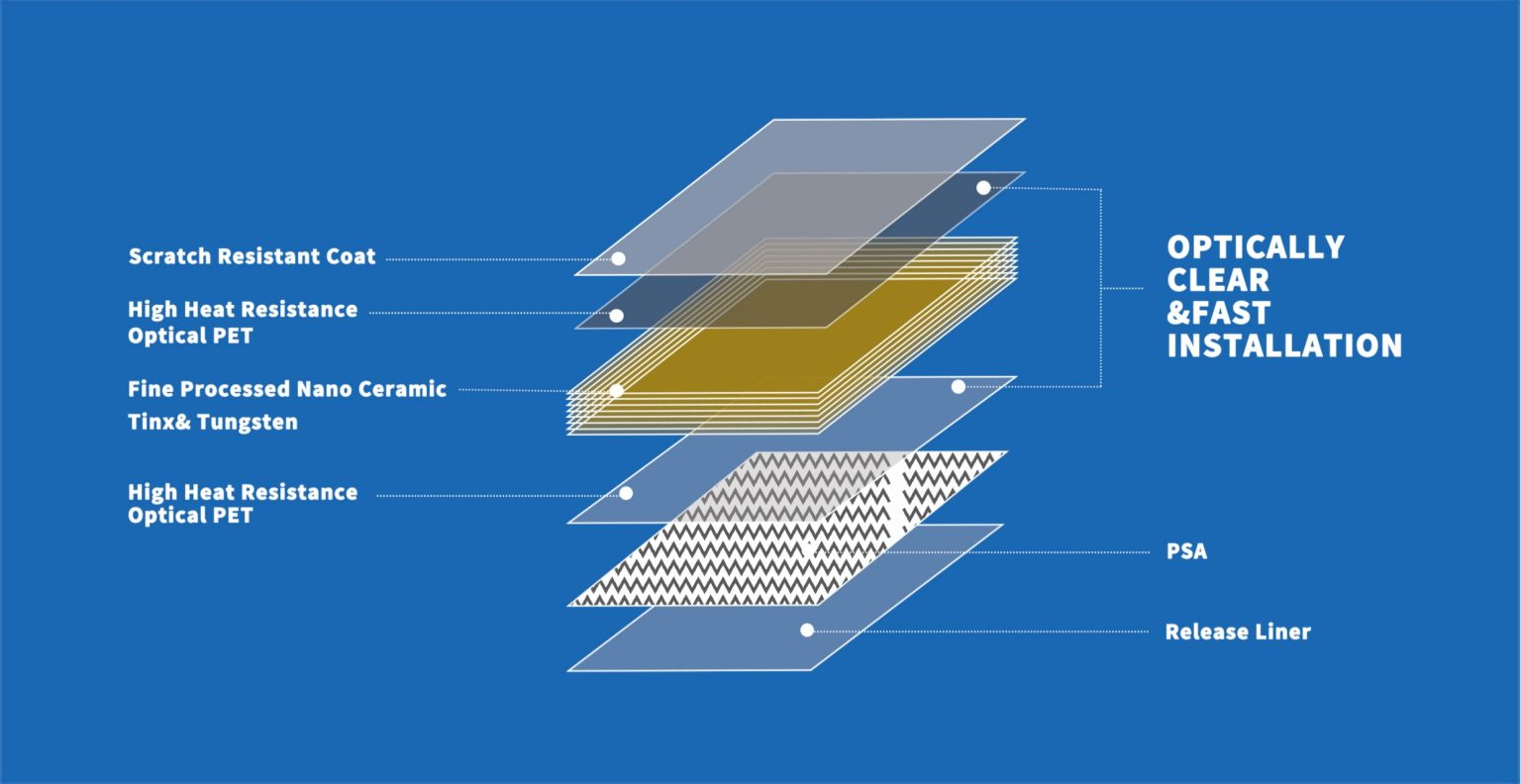KSB NK Series is a multi-layer, Nano ceramic film that applies pure Nano ceramic particles for maximum heat rejection and inorganic coloring element for optimum clarity. Nano Ceramic Window Film blocks no signal but only harmful UVs and maximum amount of heat-up to 95% of the Infrared ray. The total solar energy rejected performance can reach—63% on a 71% visible light transmission (VLT) film. The optimal heat rejections as well as safety features make it a solution for extreme high temperature climates such as the Gulf countries in the Middle East, Deserts, etc. NK series combines high heat rejection, clear optical clarity and longevity, It has a rich color and sets a bench mark for Nano ceramic films.
NK series comes in 4 shades, 5%,20%,35%,70%.
*Measures with Solar Spectrum Transmission Meter
| Specification | NK99 | NK60 | NK40 | NK20 | NK05 |
| VLT | 70% | 60% | 40% | 20% | 5% |
| UV | 99% | 99% | 99% | 99% | 99% |
| IR | 95% | 97% | 94% | 95% | 92% |
| TSER | 55% | 60% | 65% | 68% | 69% |
| Color | L BLUE | L GREEN | L Black | Black | Dark Black |
| Thickness | 2MIL | 2MIL | 2MIL | 2MIL | 2MIL |
| Film Layer | 2PLY SRC | 2PLY SRC | 2PLY SRC | 2PLY SRC | 2PLY SRC |
Performance results are calculated using Linshang Window Film Measuring Instruments, and are subject to variations within industry standards and only intended for estimating purposes. This data is provided for informational purposes only and are subject to normal manufacturing variances.
Performance results based on film applied to W (6mm) dear glass and a representative automotive glass with a base visible light transmission of 75%. Due to variations in glass performance. these values should not be used to comply with local tinting laws.
[1] VLT stands for Visible Light Transmission, -the percentage of visible light that passes through a window film or tint. It is to indicate how much light is allowed to pass through the film and into the interior of a vehicle or building. A higher VLT percentage means more light is transmitted, resulting in brighter interiors, while a lower VLT percentage means less light is transmitted, resulting in darker interiors.
[2] INFRARED ENERGY REJECTION (IRER) The percent of infrared energy (780 nm to 2500 nm) that is directly reflected and absorbed and radiated outwards. The higher the number, the more infrared energy reflected and absorbed and released outwards. IRER is the endorsed calculation method of IWFA.

KSB Nano ceramic window films combine high heat rejection performance, shrink and optimized color for pro tint masters.
KSB window tint applies advanced Nano technology and high-quality window film material, such as PET base film, inorganic Tinx ceramics to maximize the quality to the most demanding requirements.
Fine Processed Nano Ceramic materials are evenly distributed to the window film with precision to enable KSB window tint with high heat rejection.

Base materials with 4 directional shrinking properties make it easier to shrink and improve the work efficiency our window film installers.

Scientifically engineered UV blocker is placed at the glue layer to protect the interior of vehicle and safeguard the lifespan the of window film.

All KSB Nano ceramic films are designed and manufactured to the high standard and can easily outlive the vehicles which they are designed to provide comfort and shade to.


Nano is a unit of length-One nanometer is equal to one millionth of a millimeter. It is so small. When a material reaches the nanometer scale, light, electricity, magnetism, force, etc. will appear special properties completely Different with the original material. KSB films apply the nano technology to have-Titanium nitride sputtered onto the film with a high precision of less than 100 nanometers, ensuring that the heat insulation film can achieve a balanced color and extremely high definition, so that the Nano Ceramic film has a low visible light reflectivity, or no dazzling glare.
Titanium Nitride (TiN) combines the low reflection of the dye film and the high heat reflection of the metal film, so that the solar film maintains excellent heat insulation while ensuring a clear vision and reducing driving fatigue. Titanium nitride (TiN) also increases the stability of the film, coupled with the excellent durability, oxidation resistance, and corrosion resistance of the ceramic nature, making the window film durable, non-fading and non-oxidizing.